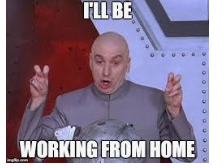
In 2019, Colorado earned the top spot for the highest percentage of employees who work from home, according to Flex.Jobs https://www.flexjobs.com/blog/post/infographic-which-states–have-most-full-time-telecommuters. While telecommuting is not realistic for every company, many jobs have at least some component that employees can do flexibly even if a job requires an employee to be onsite for specific hours. Perhaps the employee reconciles call logs or works on quarterly reports on a Sunday afternoon. The question then arises, “What is an employer’s liability for injuries occurring at an employee’s home or when traveling between the home and work?” A compensable injury is one which “arises out of” and “in the course of” the employment. An injury “arises out of” of a work-related activity if it is “sufficiently interrelated to the conditions and the circumstances under which the employee usually performs his job functions that the activity may reasonably be characterized as an incident of employment, even though the activity itself is not a strict obligation of employment and does not confer a strict benefit on the employer.” City of Boulder v. Streeb, 706 P.2d 786 (Colo. 1985). For example, in Schwindt v. Red Roof Delivery Inc., W.C. No. 4-009-534 (September 14, 1992), the Claimant, a restaurant manager, was injured when she fell down a stairway in her home at approximately 4:30 a.m., sustaining significant injuries. The Claimant had been working on schedules for the employer, and was authorized, but not required, to do so at home. The Claimant was performing this work in her living room, but began to fall asleep, so she gathered her materials to go to an office adjoining her bedroom. Just prior to approaching the stairway, the Claimant closed a door. The resultant reduced lighting impeded the Claimant’s visibility. Claimant lost her step in the hallway and fell down the stairs. The Claimant testified she “probably” would have taken a shower and returned to scheduling had the fall not occurred. The ALJ concluded the injury was compensable. He found the Claimant’s work demands permitted her to complete administrative work at home, and that, at the time of the fall, the Claimant “would have been asleep in bed” had she not been working on the schedules. The Respondents made several arguments on appeal, including that the connection between the fall and the Claimant’s employment was too remote, and that the Claimant’s act of closing the door severed the causal connection. The Panel rejected the Respondents’ arguments, holding there was a sufficient nexus between the conditions of employment and the injury. The Panel reasoned, the claimant “need only have been acting in a manner consistent with, or incidental to, the employment” to establish compensability.
Similarly, in Bates v. Coors Brewing Co., W. C. No. 4-348-224, 1998 WL 872454, (Nov. 13, 1998), the Claimant worked as a plant manager for the employer. On May 14, 1997, the Claimant left the employer’s plant in her personal vehicle to travel home, where she was going review work-related material she was taking on a business trip the following day. On her way home, the Claimant was injured in a motor vehicle accident. The ALJ found the claim compensable, holding the Claimant’s travel home on this occasion was in pursuit of the employer’s business and conferred a benefit to the employer beyond her own presence at work. On appeal, Respondents contended that the facts of this case did not fall within the travel status exception because the Claimant was not required to work at home and was not required to bring her personal vehicle to work. The Panel rejected Respondents’ arguments, holding an injury does not have to be the result of a mandatory employment activity to be compensable. University of Denver v. Nemeth, 127 Colo. 385, 257 P.2d 423 (1953); Rather, it is sufficient if the injury arises out of a risk which is reasonably incidental to the conditions and circumstances of the particular employment. This includes discretionary or “optional” activities on the part of the employee which are devoid of any duty component.
The case Roe v. Alpine Plumbing & Heating, Inc., W.C. No. 3-766-435, 1987 WL59197, (July 20, 19987), had similar facts, but a contrary result. In Roe, the Claimant who was employed by Respondent as a plumber, was injured in an automobile accident. The Claimant testified that the accident occurred while he was “driving up to the job” near Boulder. As a result of a previous injury, the Claimant was performing light-duty work for the Respondent. The Claimant’s duties included working on plans at his home. However, the ALJ found that the Claimant was “allowed to work at home for his own convenience” and that “the Claimant’s home was not an alternative job site.” Consequently, the ALJ concluded that the Claimant was not within the course and scope of his employment at the time of the accident.
Finally, in Sedgwick CMS v. Valcourt-Williams, in a 12-2 decision, the District Court of Appeals of Florida, reversed an ALJ’s decision awarding worker’s compensation benefits to an at home worker. During working hours on April 27, 2016, Valcourt-Williams, a workers’ compensation claims adjuster, reached for a cup of coffee in her kitchen and tripped over one of her dogs, fell and sustained injuries to her knee, hip and shoulder. She filed a worker’s compensation claim, which the employer denied, contending her injuries did not arise out of employment. The ALJ held the Claimant’s injuries were compensable because the work from home arrangement meant the employer “imported the work environment into the claimant’s home”. On appeal, the District Court held the Claimant’s non-employment life—her dog, her kitchen, reaching for her coffee cup—caused the accident, not her employment. The court, however, said their decision would not “immunize” employers from workers’ compensation claims in work-at-home arrangements. Two judges issued dissenting opinions. One dissenter said it was “expected that employees who work from home will take periodic breaks and may suffer compensable injuries from falls from a variety of causes”. The second dissenter argued that workplace injury from a neutral risk has been “undoubtedly compensable” and that the majority erred in their decision. The judge found that tripping over the dog was “no different than if the claimant had slipped on a liquid substance on the floor” and was consistent with a decade of case law holding that a trip and fall in the workplace is compensable.
The trend to allow employees to work from home raises many wrinkles in the event of injury, including applicability of the “dual purpose doctrine”, travel status, and obvious problems with proof. In certain factual situations, the dual purpose doctrine has been applied to cover injuries sustained while the claimant is traveling between home and the job site. One such instance exists when the nature of the claimant’s employment is such that “it can genuinely and not fictitiously be said that the home has become part of the employment premises.” In those circumstances “travel between two parts of the employer’s premises is in the course of employment.” 1 Larson’s Workers’ Compensation Law, § 16.10[1]. Larson adds the following at § 16.10[2]: When reliance is placed upon the status of the home as a place of employment generally, instead of or in addition to the existence of a specific work assignment at the end of the particular homeward trip, three principal indicia may be looked for: the quantity and regularity of work performed at home; the continuing presence of work equipment at home; and special circumstances of the particular employment that make it necessary, and not merely personally convenient, to work at home.
The reported cases suggest compensability of injuries suffered by an employee permitted to work from home are highly fact specific. If you have questions about the compensability of such an injury, or any injury, contact us.





